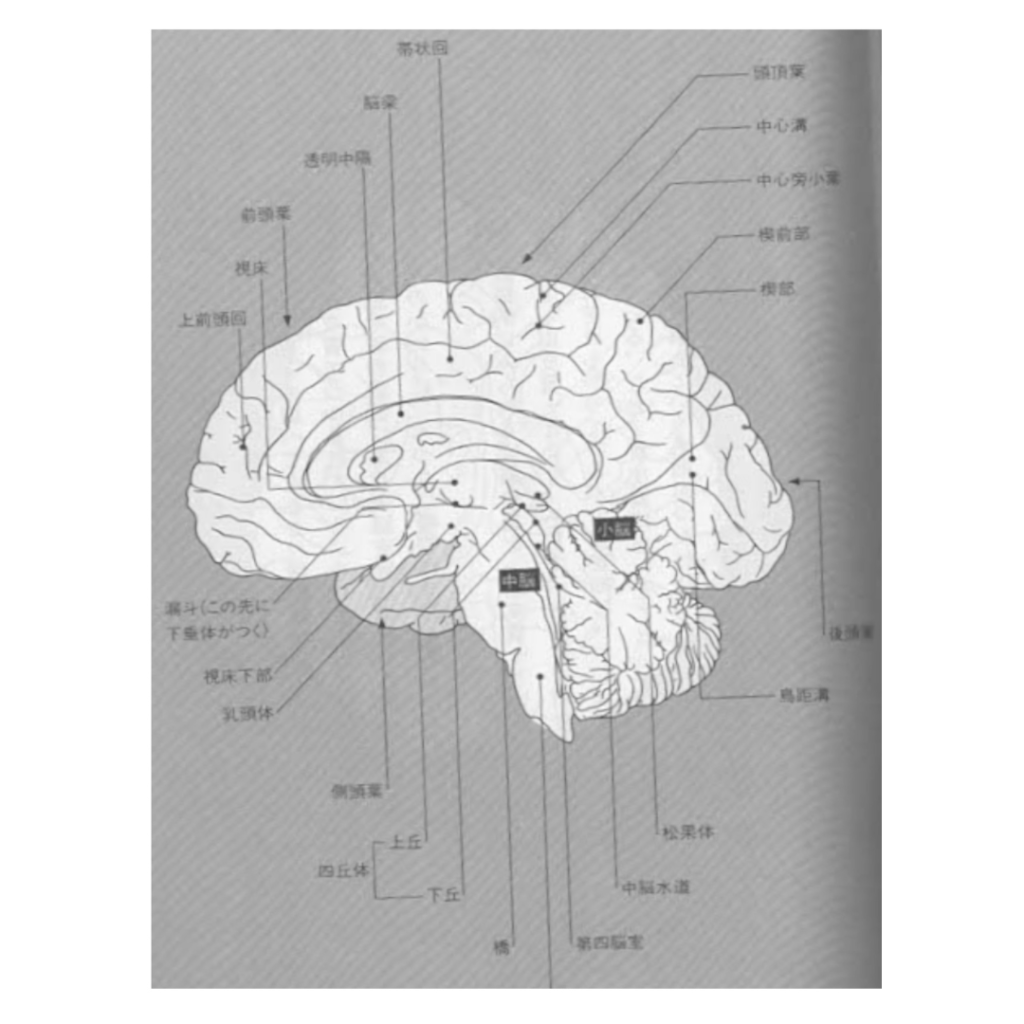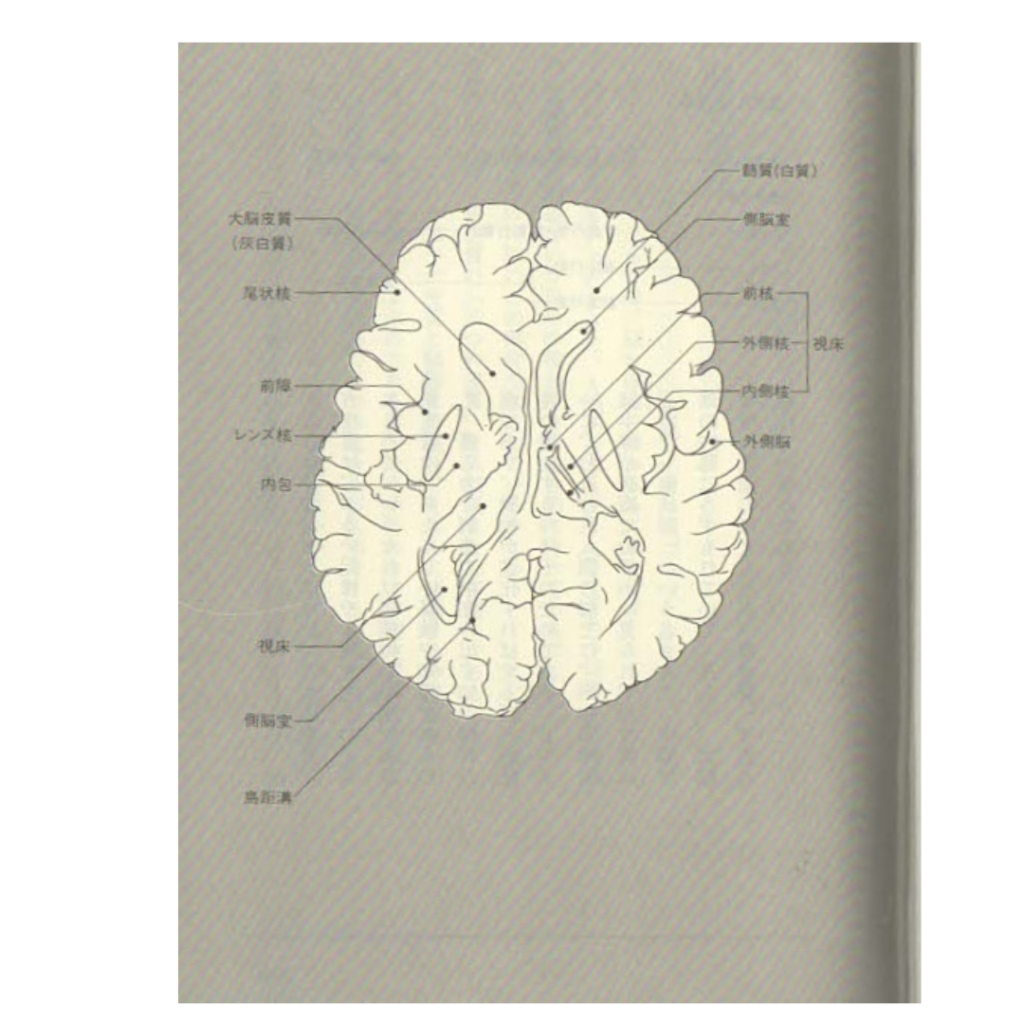

ヒトの脳の設計には致命的なミスがあった?
開明法秘伝
生のいとなみ
生きている
反射活動・調節作用
脳幹・脊髄系
生きてゆく
たくまし
うまく
本能行動・情動行動 -邁店行動
大脳辺縁系
-新皮質素
製造行動
脳の機能
るようになる。
これは、おおざっぱにいって、旧皮質、 古皮質は、ふるい記憶や体験をたくわえる ところで、いうなれば本能の心の座であり、 新皮質は、あたらしい経験や知識をたくわ え、適応力、創造力を生み出す知の精神の 座であり、動物が進化すればするほど新皮 質の増大するのはそのためである。じっさ いに、われわれ人間の脳では、旧皮質は大 脳半球の底面でわずかに見られ、古皮質は、 「海馬」「歯状回」という名まえで、大脳半 球の内部にうずもれている。 そして、 大脳 半球の表面のほとんどが「新皮質」で占め られているのである。
さて、そこで、こんどは、脳を機能の面からみてみよう。
脳は、さきにもいったように、人間の生きるいとなみである伝導・情報処 理・運動発現創造という三つの役わりを、統合的に行っている。
その統合作用は、脳のどの部分でなされているかというと、まえに述べた古 皮質、旧皮質、新皮質の「三つの皮質」と「脳髄」と「脊髄」である。
そこで、これら三つの皮質と脳髄と脊髄と、それらに連結する神経路をいっ しょにして「統合系」とよぶのであるが、そういうわけで、新皮質系 古皮質 系 旧皮質系、脳幹系、 脊髄系の五つの統合系が区別できるわけである。
しかし、前にいったように、古皮質と旧皮質はいっしょにして辺縁皮質とよ んでいるので、古皮質と旧皮質をいっしょにして、「大脳辺縁系」とよび、脳
ヒトの脳の設計には致命的なミスがあっ
幹系と脊髄系をいっしょにして「脳幹・脊髄系」とよんでいる。 以上のように、人間をあやつる脳・神経系は、はたらきの上からみると、 「新皮質系」と「大脳辺縁系」と「脳幹・脊髄系」によって組みたてられてい るから、われわれの生きる姿は、この三つの統合系が分担しているわけである。 それでは、どのような分担になっているのか?
それについて、まず「生きる」という生命のありかたを考えてみよう。
それは、大きく分けて、二つのものに分けられる。
一つは、まず「生きている」というすがであり、
もう一つは「生きてゆく」というすがたである。
「生きている」というすがたは、いわば、生命のもっとも基本的・基礎的なす がたで、一連の反射活動と調節作用によって生命活動がいとなまれる、いわば 植物的な生きかたである。意識のない静的な生命現象だ。
「生きてゆく」というすがたは、この「生きている」という基本的なものを土 台にして展開される生命活動で、多分に意識的創造的な、いうならば、 動物
的・人間的な生きかたである。
そうして、また、この「生きてゆく」 すがたは、三つの段階に表現される。 第一は、生まれながらにしてそなわっている心、すなわち、学習しなくとも 身についている心によって操作される本能行動と情動行動である。これらのも のによって、個体維持と種族保存という基本的な生命活動が保障されて、それ によってわれわれは「たくましく」生きてゆくことができるのである。
第二は、学習によって経験をつみ、つぎつぎと変化する外部環境に適切に対 処してゆく適応行動であって、これにより、われわれは技術的存在者として 「うまく」生きていっているのである。
そして第三は、未来に目標を設定し、価値を追求し、その実現をはかろうと する創造行為であって、これによって、われわれは、人格的存在者として、
「よく」生きてゆこうとしているのである。
分担されている。

以上のこの四つの生きるすがたは、表に示すごとく、三つの統合系によって
Was there a fatal mistake in the design of the human brain?
Kaimeiho secret
The spirit of life
alive
Reflex activity/adjustment effect
Brain stem/spinal system
live on
Takumashi
successfully
Instinctual behavior/emotional behavior - Ikuten behavior
limbic system
-Neocortex element
manufacturing behavior
brain function
Become so.
Roughly speaking, the old cortex stores memories and experiences, and is the seat of the instinctual mind, and the neocortex stores new experiences and knowledge, giving rise to adaptability and creativity. It is the seat of the intellectual spirit, and that is why the neocortex increases as animals evolve. In fact, in our human brains, the paleocortex is slightly visible at the bottom of the cerebral hemisphere, and the paleocortex is located inside the cerebral hemisphere under the names of the hippocampus and dentate gyrus. It's leaking. Most of the surface of the cerebral hemispheres is occupied by the neocortex.
Now, let's look at the brain from a functional perspective.
As mentioned earlier, the brain performs the three functions of human life: conduction, information processing, and creation of motor expression in an integrated manner.
The parts of the brain that carry out this integration are the three cortices, the old cortex, the old cortex, and the new cortex, the ``cerebral cord,'' and the ``spinal cord.''
Therefore, these three cortices, the brain and spinal cord, and the neural pathways that connect them are collectively called the ``integrated system.'' That is why the three systems are the neocortical system, the paleocortical system, the old cortical system, the brainstem system, Five integrated systems of the spinal cord system can be distinguished.
However, as mentioned earlier, the old cortex and the old cortex are collectively called the limbic cortex, so the old cortex and the old cortex are together called the ``limbic system,'' and the brain
There are fatal mistakes in the design of the human brain.
The trunk system and spinal cord system are collectively called the ``brainstem/spinal cord system.'' As mentioned above, the brain/nervous system that controls humans is made up of the "neocortical system," "cerebral limbic system," and "brain stem/spinal system," from a functional perspective. The way we live our lives is shared by these three integrated systems. So what is the division of labor?
Regarding this, let's first consider the way of life called ``living''.
It can be broadly divided into two types.
The first is the state of being “alive,”
The other is the state of ``living.''
The state of being ``alive'' is, so to speak, the most basic and basic form of life, a so-called plant-like way of life in which life activities are regulated by a series of reflex activities and regulatory actions. be. It is a static life phenomenon without consciousness.
The form of ``living'' is a life activity that develops based on this basic thing of ``being alive'', and is probably conscious and creative, so to speak, an animal.
It is a humane way of life.
In addition, this form of ``living'' is expressed in three stages. The first is instinctive behavior and emotional behavior that are operated by the mind that we are born with, that is, the mind that is attached to us without being learned. These things ensure the basic life activities of individual maintenance and species preservation, which enable us to live ``strongly''.
The second is adaptive behavior in which we gain experience through learning and appropriately deal with the ever-changing external environment, and this is how we live ``successfully'' as technological beings.
The third is the creative act of setting goals for the future, pursuing values, and trying to realize them. Through this, we, as personal beings,
They are trying to live a ``well'' life.
It is shared.
As shown in the table, these four ways of living are achieved through three integrated systems.


















